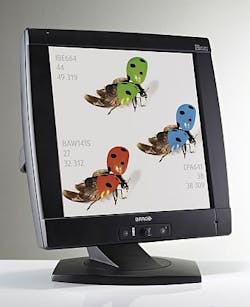Navy chooses flat-panel displays from Barco for air traffic control on amphibious assault ships
JOINT BASE MCGUIRE-DIX-LAKEHURST, N.J., 24 March 2012. U.S. Navy shipboard air traffic control experts needed flat-panel displays for the AN/TPX-42A(V) shipboard air traffic control system aboard naval amphibious assault ships. They found their solution from Barco Inc. in Duluth, Ga.
Officials of the Naval Air Warfare Center (NAWC) Aircraft Division, Lakehurst at Joint Base McGuire-Dix-Lakehurst, N.J., awarded an $8.6 million contract to Barco Thursday for flat-panel display equipment for the AN/TPX-42A(V) air traffic control system, which also is known as the Amphibious Air Traffic Control Direct Altitude and Identification (AATC DAIR) system.
Barco will provide flat-panel displays with mounting hardware; interface boards with digital video interface (DVI); flat-panel displays with DVI; back light assembly with cathode fluorescent; and mini display port keyboard with maintenance keyboard.
The AN/TPX-42A(V) is an automatic beacon and radar tracking system that provides terminal air space control for helicopters and fixed-wing aircraft on Navy amphibious assault ships such as the Navy's Tarawa- and Wasp-class ships.
Aircraft and air traffic management operations aboard amphibious assault ships are fundamentally different from those of aircraft carriers in that the Navy's big-deck amphibs primarily host helicopters that support Marine Corps operations ashore, rather than strike and fighter aircraft that operate from the aircraft carriers.
Amphibious assault ships also can host aircraft such as the AV-8B Harrier jump jets and the SH-60 LAMPS MK III Seahawk anti-submarine warfare helicopter, as well as Marine Corps helicopters such as the CH-53 Sea Stallion heavy-lift helicopter, the CH-46 Sea Knight medium-lift helicopter, the AH-1W Cobra attack helicopter, and UH-1N Huey utility helicopter.
Not only does the AN/TPX-42A identify aircraft, but the system also uses radar to detect and track targets. The system automatically tracks Mode 1, 2, 3/A, and C-equipped aircraft, and displays the aircraft identity, altitude, and other data for shipboard air traffic controllers on plan position indicator consoles aboard ship.
The AN/TPX-42A also can process and display aircraft flight plans, geographic reference points, and map lines. It uses the AN/SPN-43C radar as its primary data source, as well as the AN/SPS-49A radar as a secondary source.
For this contract Barco will do the work in Duluth, Ga., and should be finished by March 2017. For more information contact Barco online at www.barco.com, or NAWC Lakehurst at www.navair.navy.mil.
Follow Military & Aerospace Electronics and Avionics Intelligence news updates on Twitter
